Here are some pics of the lock internals.
It would be appreciated if someone could post pics of the Twigg intercepting sear arrangement. Not having pics, I have to go with smart dog's description - which might not entirely fit this mechanism.
Smart dog states "It is designed so the inner half of the sear tip is not connected to the sear bar" On this lock, the spring-loaded inner tip of the sear is connected to the sear at the pivot point, but is not directly connected to the outer full-cock tip. Depending how one interprets smart dog's description, it could fit this lock.
Smartdog also states "When the lock is pulled back to full cock, the two sear tips line up and the lock fires normally" On this lock, the two sear tips do not line up at full cock and only the full-cock tip engages the tumbler.
On this lock, the spring-loaded inner portion of the sear engages the half-width half cock notch on the tumbler at half cock and the fixed portion of the sear engages the also half-width full cock notch at full cock. It should also be noted that the full-cock lobe on the tumbler appears to be at a slightly larger radius than does the half-cock lobe. The off-center pivot hole in the sear is also interesting. Considering how far it is off center, I believe it to be deliberate. The effect, if any, would appear to be slightly raising the full-cock nose as the spring is compressed and lowering it when relaxed. Relevance?
While not suggesting this lock dates that early, it appears the mechanism in this lock might fit the description on page 34 in Blackmore's "Guns and Rifles of the World".
"Next comes a lock which from the outside appears to be no different, but
has a sear with an additional prong inside which comes into operation in the half-cock position, blocking the movement of the tumbler. The gunmakers obviously did not trust this measure entirely and so for the most part retained the outside dog as well. In the 1640s, however, they took this idea one step farther and
made both prongs of the sear act on the tumbler, there being no longer a projection through the lock-plate. A pair of pistols with this type of lock, by the London gunmaker William Watson in the Tower of London (XII-1495-6), can be dated to c. 1650."
I am not sure I have a proper understanding of " made both prongs of the sear act on the tumbler" but the description would appear to fit this lock.
All in all, this is an interesting mechanism and I look forward to what others have to say about it. As rich pointed out, the inclusion of the stirrup might well establish the earliest possible date of manufacture. Still looking for hard evidence regarding introduction of the stirrup.
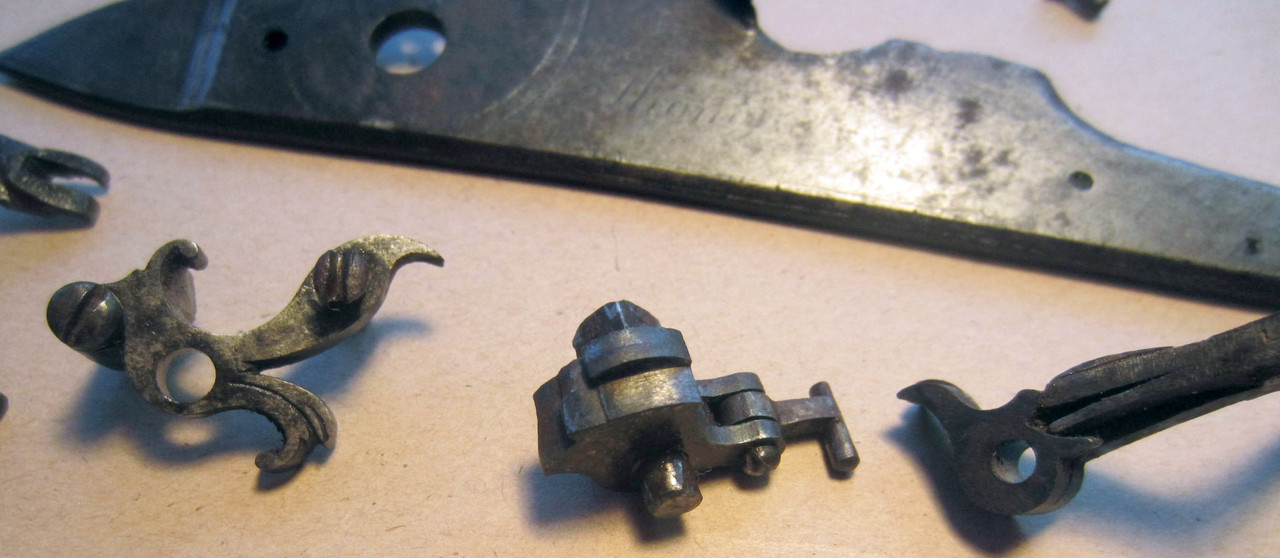
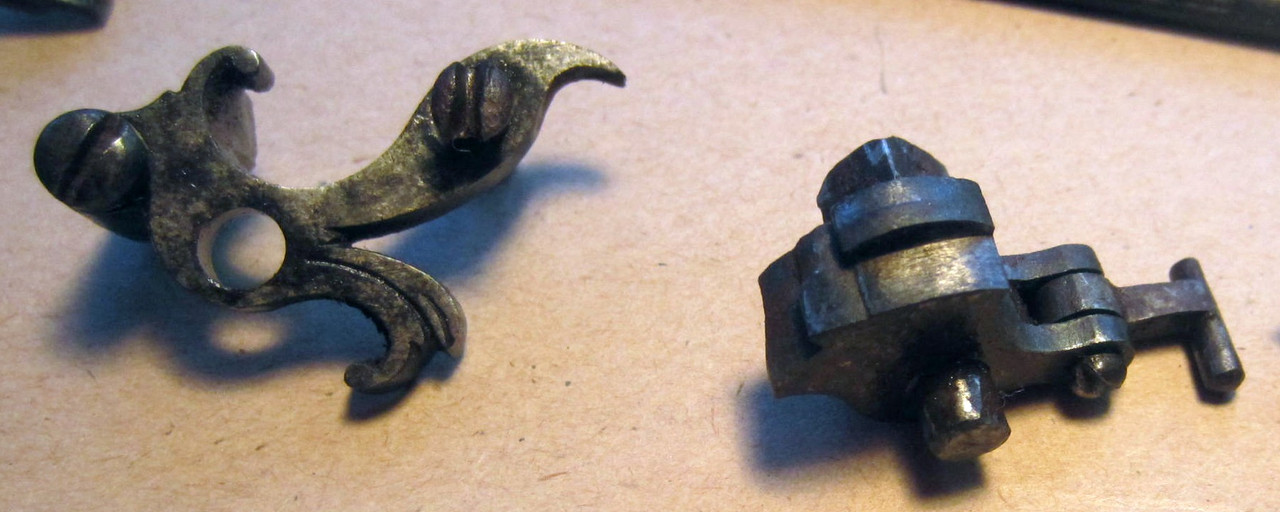
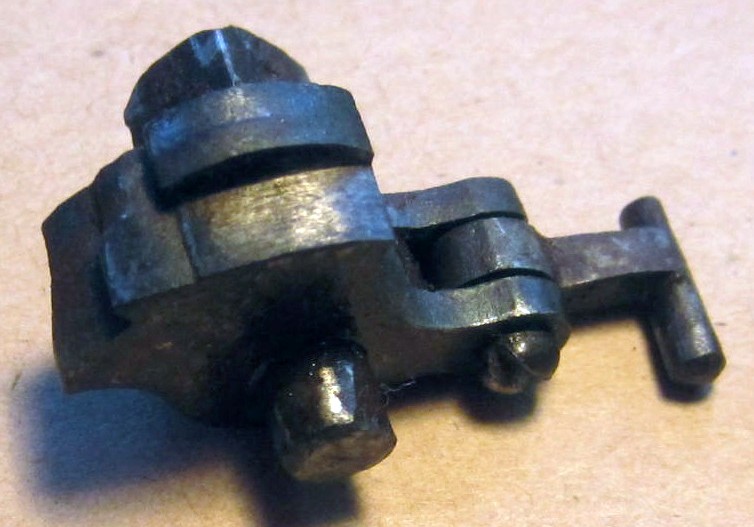

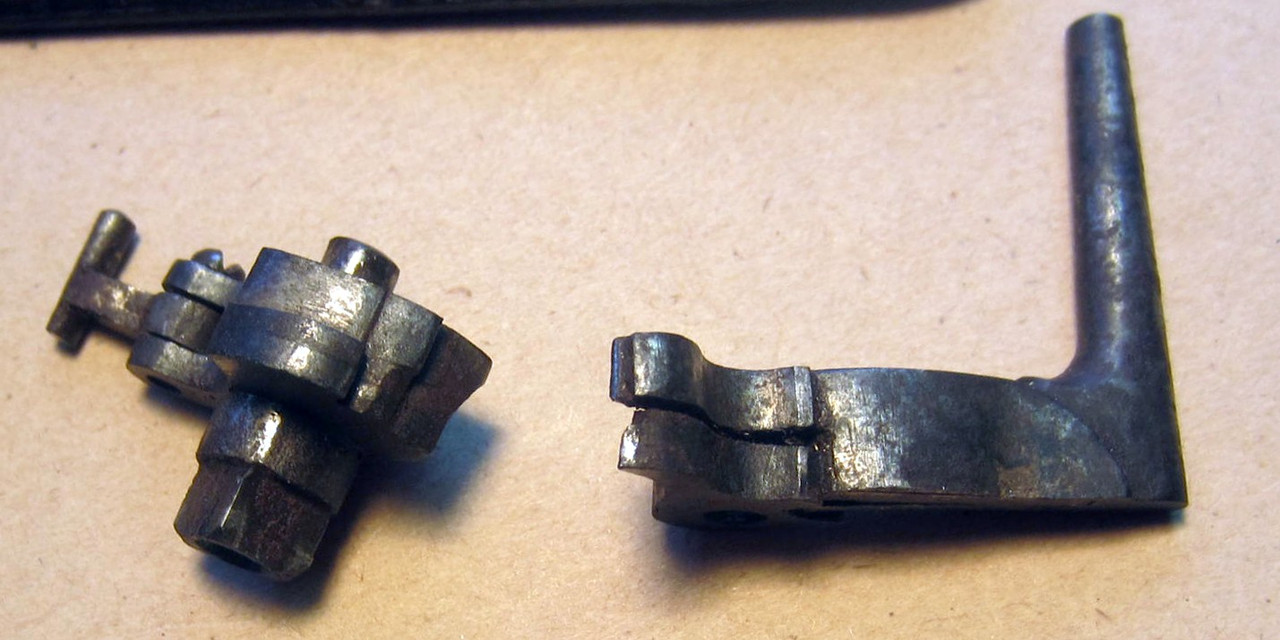
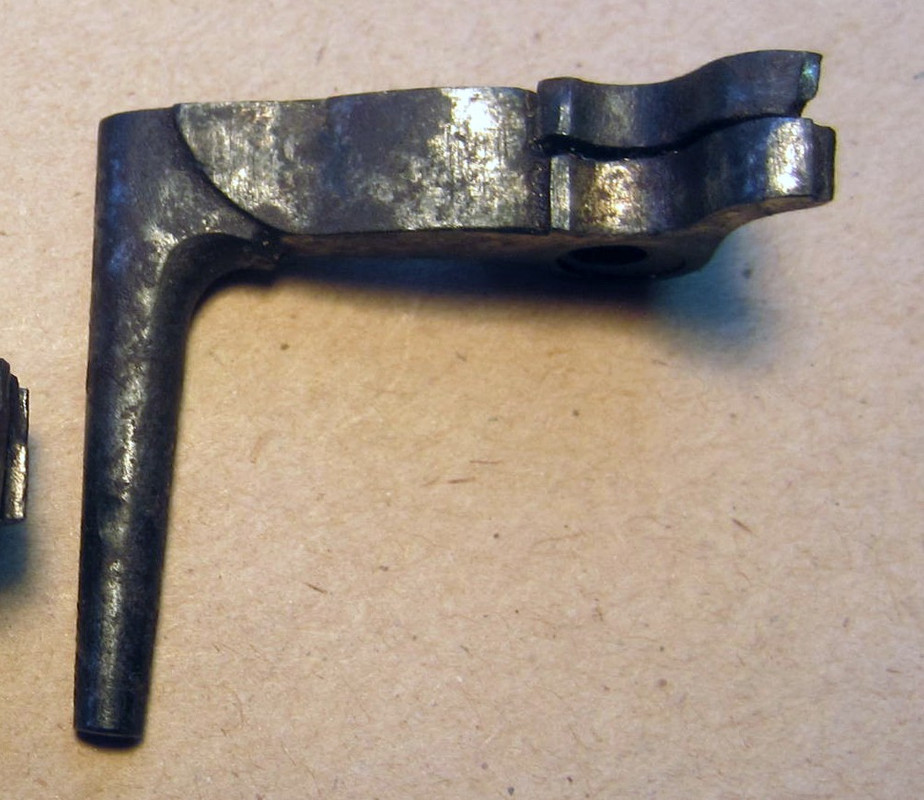
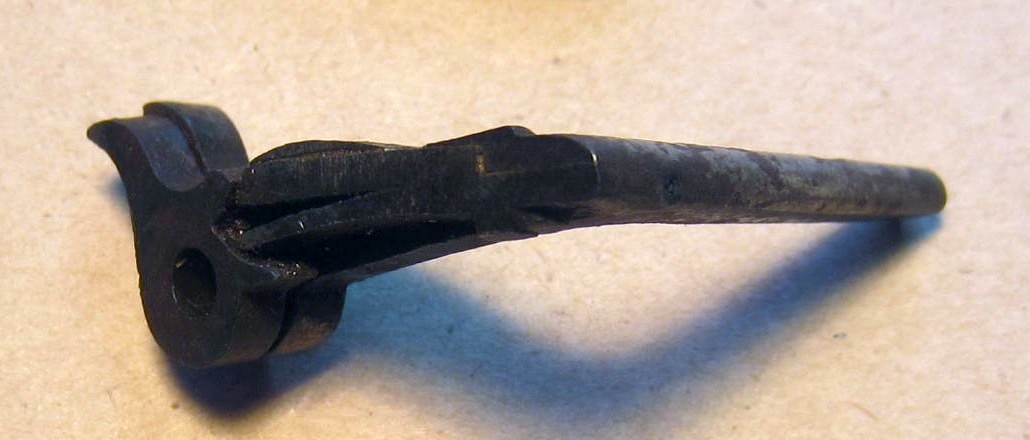



The signature on the plate appears to be "Thoma?". Any ideas?

Some pics of furniture and architecture will follow shortly.

